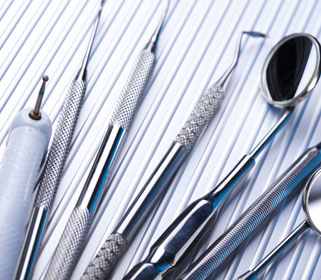Home » Rehabilitation Equipment & Products » Sports Medicine Injuries - Causes & Treatment » Sports Medicine Injuries - Causes & Treatment
Sports Medicine Injuries - Causes & Treatment
What Are the Most Common Injuries Seen By Sports Medicine Specialists?
Injuries treated by sports medicine professionals are of two categories: traumatic or acute sports medicine injuries and chronic or cumulative trauma sports medicine injuries.
Traumatic (Acute) Sports Medicine Injuries occur with a sudden, quick force:
-
Sprains — injuries to ligaments that support joints;
-
Strains — injuries to muscles and tendons that move joint bones;
-
Abrasions — scrapes usually caused by a fall and sliding across rough surfaces;
-
Contusions (bruises) — bleeding under the skin;
-
Fractures — breaking, cracking or crushing a bone;
-
Tears — tears in ligament, tendon or muscle tissue;
-
Facial Injuries — broken nose or orbital bones around the eyes;
-
Dental Injuries — broken teeth, bitten lip or tongue or a broken jaw;
- Concussions — contusions (bruises) on the brain surface caused by impact.
Chronic or Cumulative Trauma Sports Medicine Injuries — injuries that are caused by overuse and that typically worsen over time:
-
Bursitis — inflammation of the fluid-filled bursa sacs within joints that cushion and pad bones;
-
Tendonitis — inflammation of the tendon tissue;
-
Stress Fractures — tiny cracks in bones caused by overuse;
-
Muscle spasms — sudden tightening of muscle tissue due to fatigue;
- Muscle strains — small tears or stretching of the muscle that causes bleeding in muscle tissue.
What Causes Sports Injuries?
-
Ill-fitting sports equipment;
-
Lack of muscle strength around a joint;
-
Not stretching muscles properly;
-
Not warming-up muscles properly;
-
Not following a regular sports medicine conditioning program;
-
Not wearing safety equipment;
- Players, coaches and fans with a “winning is everything” attitude.
First Aid Treatment Recommended by Sports Medicine Professionals
-
Do not move the injured person.
-
Do not remove protective gear, including helmets.
-
Determine the extent of the injury.
-
Protect yourself with sports medicine latex glove products, or plastic bags, to avoid contact with body fluids.
-
Apply pressure to bleeding wounds with clean sports medicine compress products.
- Do not use pressure around eye injuries. All eye injuries should be evaluated by an eye specialist.
Treatment for Non-Critical Injuries Recommended by Sports Medicine Professionals:
-
RICE — Rest, Ice, Compression and Elevation;
-
Sports medicine splinting products to immobilize the injured body part;
- Apply sports medicine heating products during the final recovery phase only as a relaxation aid.
Injury Prevention Recommended by Sports Medicine Specialists
-
Warm up slowly prior to any sports activity.
-
Stretch the muscles before and after exercise, using proper form, and never bounce. (Bouncing causes tiny tears in muscle fibers.).
-
Wear appropriate sports medicine safety equipment for the sport that fits properly and snugly.
-
Wear sports medicine neoprene compression sleeve products to protect joint movement and add support.
-
Use safety equipment recommended by sports medicine professionals, including:
-
Protective sports medicine eyewear such as safety glasses or goggles;
-
Sports medicine mouth guards;
-
Sports medicine helmets;
-
Sports medicine knee and elbow guards;
-
Sports medicine face guards for sports such as football, hockey, baseball and handball.
- Wear sports medicine support products on areas susceptible to injury.
Preventive Support Products Recommended by Sports Medicine Specialists
Sports medicine products from Medical Supplies and Equipment have been specifically designed to support the areas susceptible to injury. Our sports medicine products are durable, lightweight and reasonably priced.
-
Sports medicine patella straps apply consistent compression for minimal migration.
-
Hinged, low-profile sports medicine knee supports, lightweight and not bulky, provides medial and lateral stabilization, protect against hyperextension.
-
Flexible, compressive sports medicine knee supports for swollen, sprained, arthritic or post-operative knees.
-
Neoprene sports medicine knee braces worn during healing and as a sports medicine preventative (wraps or pull-ons, with or without hinges).
- Neoprene sports medicine thigh wraps provide compression to relieve or prevent quadriceps or hamstring strains (loop and hook or pull-on styles).
-
Sports medicine night splints treat plantar fasciitis and achilles tendonitis.
-
Durable sports medicine silicone insoles provide shock absorption with softer inserts for the sensitive heel and ball of the foot and are especially effective to ease sports medicine pain from heel spurs, shin spints, plantar fat atrophy and arthritis.
-
Sports medicine heel pads and cushions reduce heel pain.
- Sports medicine splints protect feet during post-operative sports medicine care (lightweight and adjustable with a non-skid sole).
- Sports medicine epicondylitis clasp supports provide orthopedic compression for forearm tendons and sports medicine shock absorption to ease tennis elbow symptoms.
-
Sports medicine wrist splints and sports medicine supports with abducted thumb immobilize the wrist and thumb, protect from impact and absorb shock.
-
Sports medicine thumb splints protect, support and immobilize the thumb and wrist, plus stretch to allow for swelling changes.
- Sports medicine thumb stabilizers, lightweight and low profile orthopedic supports, provide flexible orthopedic support during daily activities.













